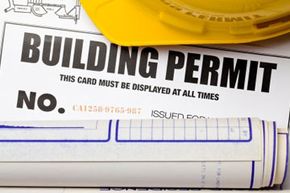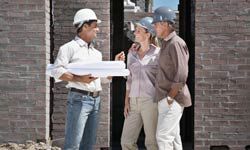In 1992, Hurricane Andrew struck South Florida with a vengeance. Think wind speeds of 170 miles an hour (273 kilometers per hour). Ultimately, the storm destroyed more than 53,000 homes, at a cost of $25 billion, but part of that damage could have been prevented [source: Zarella]. Inadequate codes, shoddy construction and -- believe it or not -- lax enforcement of building permits contributed significantly to the destruction.
But isn't a building permit just a nuisance that plagues every home improvement project? Isn't it just a way for bureaucrats to tell you what you can and can't do on your own property?
Advertisement
That's how a lot of homeowners think of building permits. But a natural disaster can be wake-up call. The fact is, the building permit process can save your life. It can also play a big role in protecting the value of your home.
Building permits are the way counties, towns and municipalities enforce their building codes. Local governments adopt those codes in order to ensure that all buildings meet minimum safety and structural standards. They update them every few years as new building methods and materials are introduced.
Hurricane Andrew caused many Florida communities to beef up building codes and to enforce permits more rigorously. From their beginning, building codes and permits have often been responses to disaster. Way back in 1625, the Dutch West India Company addressed problems of fire and poor sanitation by passing a building code for New Amsterdam, which we now know as New York. A terrible fire in 1666 in London led to the London Building Act. The famous 1871 Chicago Fire resulted in new regulations there four years later [source: NYC Building Dept., Buyer's Choice].
Today, those initial responses to disaster have grown into comprehensive building codes for both commercial and residential construction. They're common in America, Europe and many other parts of the world. Many states and municipalities base their own codes on model codes, which have been around since the National Board of Fire Underwriters published the first model code in the United States in 1905 [source: Dehring]. The International Residential Code is another widely used model today.
The regulations behind building permits are based on the best and safest methods determined by experienced engineers. These set parameters help keep you and your home safe, but as you'll find out on the next page, there are some other benefits to getting a building permit as well.
Advertisement


